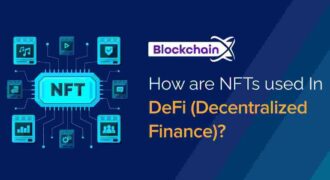Blockchain technology, once synonymous only with Bitcoin and cryptocurrencies, has rapidly evolved into a transformative force across industries. Today, enterprises worldwide are exploring how distributed ledger technology (DLT) can reshape operations, improve transparency, and reduce inefficiencies. But despite its promise, blockchain adoption at the enterprise level is far from simple. It comes with hurdles—technical, regulatory, and organizational—that businesses must navigate carefully.
In this article, we’ll unpack the real challenges and exciting opportunities of enterprise blockchain adoption—helping you understand how global corporations are moving from curiosity to real-world implementation.
🔍 Understanding Enterprise Blockchain
Unlike public blockchains such as Bitcoin or Ethereum, enterprise blockchains are often permissioned systems, designed for specific business needs. This means only authorized participants can access, validate, or record transactions, allowing companies to maintain both security and privacy.
Enterprise blockchains are used in:
- Supply chain management (tracking goods across borders)
- Finance and payments (cross-border settlements and trade finance)
- Healthcare (secure patient record management)
- Energy (smart grid data sharing)
- Government and identity systems (digital IDs and transparent record-keeping)
The main appeal? Trust, transparency, and traceability. Businesses can verify data without intermediaries, reducing costs and enhancing collaboration.
🏗️ The Promise: Why Enterprises Are Turning to Blockchain
Blockchain holds enormous potential to transform corporate operations. Here’s what’s driving enterprise interest:
1. Transparency and Trust in Multi-Party Networks
Enterprises often operate across global ecosystems—manufacturers, suppliers, distributors, regulators, and consumers. Blockchain provides a single, immutable source of truth, minimizing data disputes and improving accountability.
2. Enhanced Security
With cryptographic protection and consensus mechanisms, blockchain offers robust security against tampering or unauthorized changes—something traditional centralized databases struggle to achieve.
3. Operational Efficiency and Cost Reduction
By removing intermediaries and automating processes through smart contracts, blockchain can cut transaction times from days to seconds and reduce administrative overheads.
4. Auditability and Compliance
Each blockchain transaction is time-stamped and traceable, simplifying audits and compliance in industries like banking, healthcare, and logistics.
5. Innovation and New Business Models
Blockchain opens the door to tokenization, decentralized finance (DeFi), and new forms of digital asset management—unlocking value beyond traditional operations.
⚠️ The Roadblocks: Challenges in Enterprise Blockchain Adoption
Despite its promise, blockchain adoption faces a series of challenges that have slowed enterprise implementation.
1. Scalability Concerns
Most blockchain systems struggle to handle the high transaction volumes that enterprises demand. While Bitcoin processes roughly 7 transactions per second and Ethereum about 30, corporations like Visa handle thousands. Enterprises need scalable solutions that don’t compromise decentralization or security.
2. Interoperability Issues
Many organizations deploy private blockchains that operate in isolation. Without interoperability between networks, data silos can re-emerge—defeating the purpose of decentralization. Efforts like Polkadot, Cosmos, and Chainlink’s Cross-Chain Interoperability Protocol aim to fix this, but true cross-chain collaboration remains in progress.
3. Regulatory Uncertainty
Different jurisdictions interpret blockchain use differently—especially when it involves tokenization or digital assets. Enterprises must navigate evolving compliance landscapes related to data privacy (like GDPR), digital identity, and anti-money laundering (AML) regulations.
4. Integration with Legacy Systems
Most corporations rely on decades-old IT infrastructure. Integrating blockchain with existing systems (ERP, CRM, or supply chain software) requires significant technical customization, time, and cost.
5. Lack of Skilled Talent
There’s a shortage of blockchain developers and architects who can design secure, enterprise-grade networks. Companies often struggle to find the expertise needed to implement and maintain blockchain solutions effectively.
6. Cultural Resistance and Misconceptions
Many decision-makers still associate blockchain solely with cryptocurrencies or view it as a buzzword. Changing this mindset and aligning leadership with digital transformation goals remains a major barrier.
🌍 Case Studies: Blockchain in Enterprise Action
Despite these challenges, several major corporations are pioneering blockchain applications across industries:
- IBM Food Trust: Used by companies like Walmart and Nestlé to track food origins and improve supply chain transparency.
- Maersk and TradeLens: Revolutionized global shipping documentation, reducing paperwork and fraud.
- JPMorgan’s Onyx Platform: Powering instant blockchain-based settlements for institutional clients.
- De Beers’ Tracr: Ensures ethical sourcing and tracking of diamonds from mine to market.
These examples highlight how blockchain can create tangible business value when implemented strategically.
💡 The Opportunities Ahead
As blockchain technology matures, enterprises stand at the edge of a digital revolution with endless possibilities:
1. Tokenization of Assets
Real-world assets—from real estate and art to carbon credits—can be tokenized and traded securely on blockchain networks, unlocking liquidity and democratizing investment.
2. Supply Chain Optimization
End-to-end visibility and data integrity will make global supply chains faster, safer, and more transparent, reducing fraud and ensuring sustainability.
3. Cross-Border Payments and Trade Finance
Blockchain simplifies global transactions by eliminating intermediaries, offering instant, low-cost settlements—a game-changer for international business.
4. Data Ownership and Privacy
Enterprises can adopt blockchain-based identity solutions that give users control over their data, fostering trust and compliance.
5. Sustainability and ESG Tracking
Blockchain can verify carbon credits, track renewable energy use, and validate ESG data—helping companies prove their sustainability commitments.
🚀 The Path Forward: From Pilots to Production
Most enterprises are still in the pilot or proof-of-concept stage of blockchain adoption. To move toward production-level implementation, companies must focus on:
- Choosing the right blockchain model (public, private, or hybrid)
- Collaborating within industry consortia for shared standards and infrastructure
- Investing in education and talent to build blockchain literacy
- Working with regulators to shape compliant frameworks
- Measuring ROI not just in cost savings, but in long-term innovation and trust
🧭 Final Thoughts
Enterprise blockchain adoption is no longer a distant vision—it’s happening now, albeit gradually. As the technology matures and standards evolve, blockchain will become as integral to business operations as the internet once did.
The road ahead is complex, filled with regulatory hurdles and integration challenges. But for those who navigate it successfully, the rewards are substantial: efficiency, transparency, and a new foundation of digital trust.
In the coming years, the enterprises that embrace blockchain thoughtfully will not just adapt to change—they’ll define the future of global commerce.










